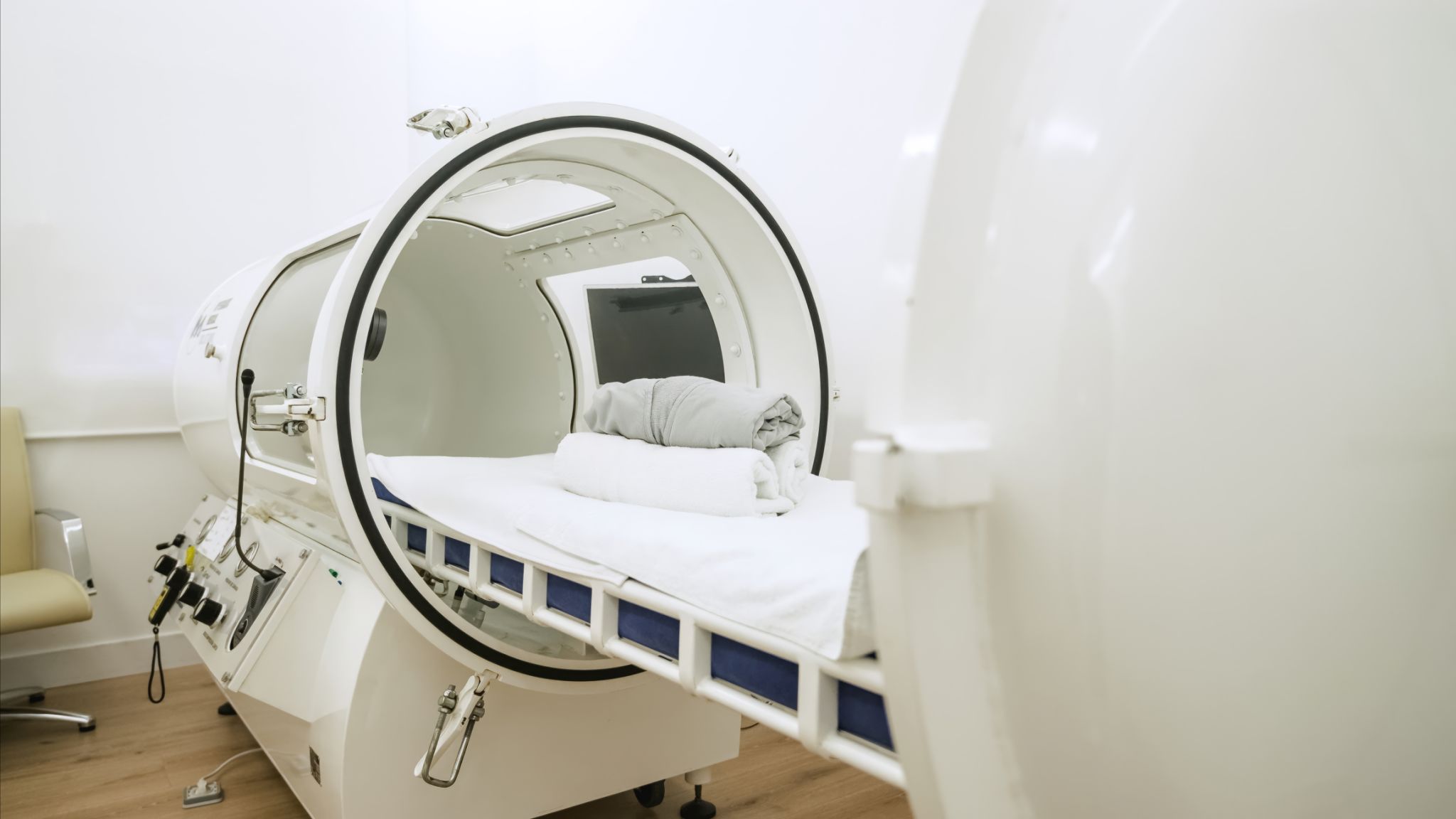How Hyperbaric Oxygen Therapy Accelerates Recovery: A Comprehensive Guide
VN
Understanding Hyperbaric Oxygen Therapy
Hyperbaric Oxygen Therapy (HBOT) is a medical treatment that enhances the body's natural healing processes by inhaling 100% oxygen in a total body chamber, where atmospheric pressure is increased and controlled. Originally developed to treat decompression sickness in divers, it has now found numerous applications in various medical fields.
HBOT works by increasing the amount of oxygen your blood can carry, which promotes healing and reduces inflammation. This treatment has gained popularity for its ability to accelerate recovery from various conditions, ranging from chronic wounds to sports injuries.

The Science Behind HBOT
The primary mechanism of HBOT involves the delivery of high concentrations of oxygen to the bloodstream. This process significantly raises the partial pressure of oxygen in the tissues, which can aid in healing. By promoting the formation of new blood vessels and reducing swelling, HBOT can help repair damaged tissues more efficiently.
Moreover, increased oxygen levels enhance the ability of white blood cells to kill bacteria, reducing the risk of infection. This is especially beneficial in cases of chronic infections or wounds that are resistant to standard treatments.
Benefits of Hyperbaric Oxygen Therapy
The benefits of HBOT are vast and varied. Some of the most notable advantages include:
- Faster healing of wounds and injuries
- Improved circulation and reduced swelling
- Enhanced immune response
- Reduced effects of toxic substances, such as carbon monoxide

Applications of HBOT in Medical Treatment
HBOT is used to treat a wide range of conditions. It is particularly effective in treating chronic non-healing wounds, such as diabetic foot ulcers, as well as radiation injuries from cancer treatment. Furthermore, athletes utilize HBOT to speed up recovery from sports-related injuries, allowing them to return to their peak performance faster.
In addition to these, HBOT has shown promise in treating neurological conditions like traumatic brain injury and certain types of stroke by improving oxygen supply to affected areas of the brain.
What to Expect During a Session
A typical HBOT session involves sitting or lying in a sealed chamber where the pressure is slowly increased. Patients breathe pure oxygen for a duration that typically lasts between 60 to 90 minutes. Multiple sessions may be necessary, depending on the condition being treated.

Potential Side Effects and Considerations
While HBOT is generally considered safe, some patients may experience mild side effects such as ear discomfort or sinus pressure due to changes in atmospheric pressure. In rare cases, more severe complications can occur, which is why treatments should always be supervised by qualified healthcare professionals.
Before starting HBOT, a thorough assessment by a healthcare provider is crucial to determine if it's the appropriate treatment for your condition. It's essential to discuss any pre-existing health issues or medications you're taking that may interact with the therapy.
Conclusion: Is HBOT Right for You?
If you're considering Hyperbaric Oxygen Therapy as part of your recovery plan, it's important to consult with a medical professional to assess its suitability for your specific needs. With its proven benefits in enhancing recovery and overall health outcomes, HBOT represents a promising option for many patients looking to accelerate their healing process.
